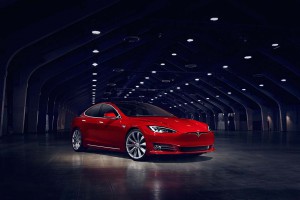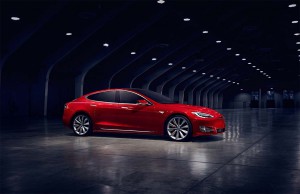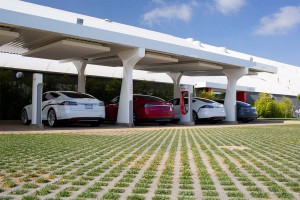Tesla is a brand that likes to do things its own way. The battery-carmaker doesn’t even use model-year designations, insisting it constantly updates its products, rather than waiting for some arbitrary date to make changes.
But occasionally, some revisions stand out, like the new face Tesla is giving the big Model S sedan. The new look is more in line with the grille-less look first seen on the new Tesla Model 3 sedan at its big launch late last month. The idea, it seems, is to make it absolutely clear this is an electric vehicle.
There are other changes with the Model S, including a more powerful built-in charger that should cut recharging times. There are more interior options, as well as a pollution control system that, suggests Tesla, could fend off a bioweapon assault.
“We often talk about all of the ways that Tesla vehicles get better over time,” said a Tesla statement. “Through previous software updates we’ve made Model S faster, smarter and even introduced industry leading safety and convenience features.”
(Tesla orders first recall for new Model X. Click Here to learn why.)
Tesla has added a number of features on the fly using software. It has helped that the Model S is capable of automatically receiving wireless updates such as the AutoPilot technology that gives the Model S – and newer Model X – the ability to operate hands-free on well-marked, limited-access highways.
“Software updates are free throughout the life of the vehicle,” noted spokesperson Alexis Georgeson, who adds that Tesla Cars can “actually improve over time.”
Tesla has also made hardware changes at its Fremont, California factory. Among the latest is a switch to a 48-amp onboard charger. The current system is 40 amps. The update will allow a modest reduction in charging times, whether using a home or commercial charging system, as well as the high-voltage Tesla SuperCharger network.
The updated models that will begin shipping in May also will feature two new interior options: Figured Ash Wood and Dark Ash Wood.
And whether living in smoggy urban environments, or in country settings where pollen can be a problem, Tesla is adding a new HEPA air filtration system that was first introduced on the Model X battery SUV. It claims the systems is 100 times more effective at blocking smog, exhaust pollution from gas and diesel vehicles, and allergens and bacteria.
But the most notable update for what other makers might call the 2017 model-year is readily apparent up front. The Tesla Model S gets new headlights and bumpers, and a grille that is now little more than a slit. That’s closer in appearance to the grille-less look of the Model 3 which was revealed to a standing-room-only crowd at Tesla’s Fremont plant on March 31st.
(For a closer look at the Tesla Model 3, Click Here.)
(The new Model 3 has already generated more than 300,000 advance deposits, though it remains to be seen how many will translate into actual purchases when the new battery-car launches. It’s set to go into production in late 2017, though Tesla has a history of missing its targets, the Model X debuting about two years behind schedule.)
Tesla isn’t referring to the updated Model S as a 2017. In fact, it pointedly refuses to use model-year designations, emphasizing its focus on continuous improvement. That said, federal law actually requires a manufacturer to use a model-year designation — even if it doesn’t market that to consumers – in order to comply with government safety, emissions and mileage mandates.
(Tesla could run out of federal $7,500 tax credits before launch of the Model 3. Click Here for the story.)



